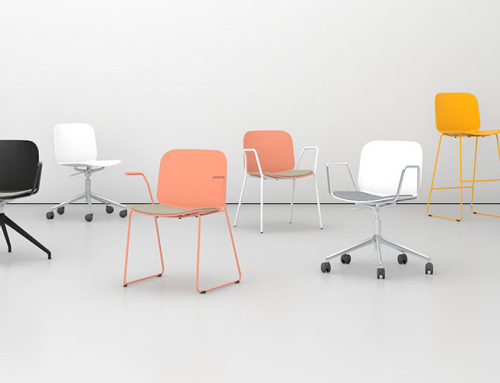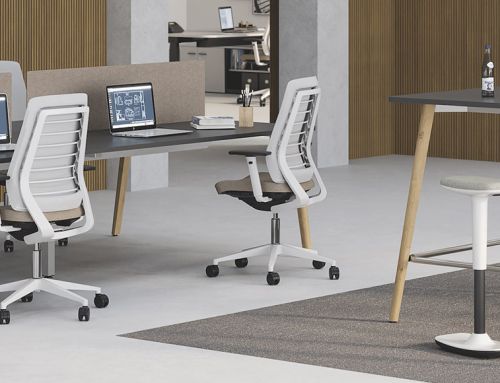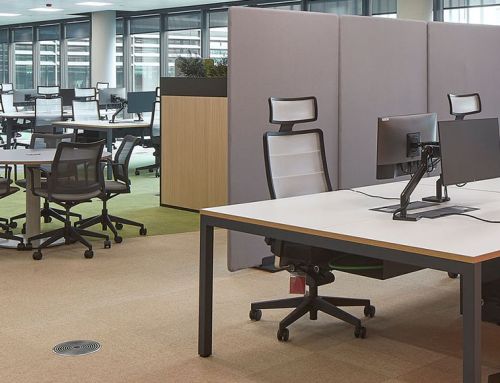Environmental ergonomics is the area of ergonomics specialized in the study of physical and environmental factors that constitute the environment of the system formed by the person and the work team.
What is workplace ergonomics and why is it important?
Environmental ergonomics includes the study of thermal, visual, acoustic, mechanical, electromagnetic and workstation distribution environments. This discipline is important because it influences aspects related to the safety, efficiency and comfort of workers.
Lighting, noise and temperature conditions influence visual health, the ability to concentrate and comfort and well-being. For this reason, in office positions, the type of luminaire, the intensity of the light, as well as many other factors (noise, temperature, etc.), are evaluated by the internal or external Prevention Services in order to find out if they are according to current regulations or if an intervention by the company is necessary.
In addition to this, having a suitable ergonomic environment has a positive influence on various aspects of the organization and contributes to an increase in the productivity levels of employees and the organization in general. Logically, when we feel good we work better. Hence, the importance of environmental ergonomics for both workers and companies.
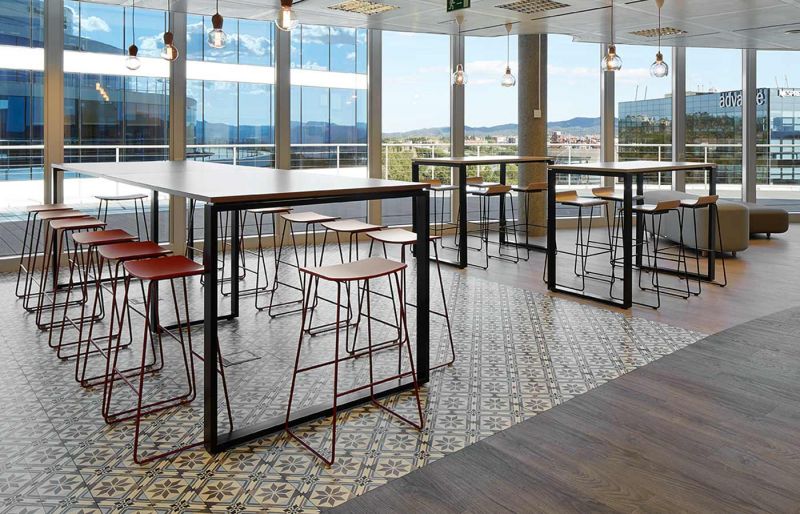
Types of environmental ergonomics at work
There are essential measures to define what environmental ergonomics is:
- Control of air currents.
- Temperature control.
- Constantly monitor air quality to detect the presence of chemical factors.
- Reduction or minimization of glare and reflections.
- Electromagnetic control.
- An ergonomic layout and design of the workstation.
- Adequate lighting levels for each zone, according to activity.
- Provide workers with the appropriate clothing for the tasks and activities they must perform.
- Reduce vibrations to the lowest level in work spaces.
- Perform corrective and preventive maintenance on infrastructures.
Let’s look at some of these basic measures of environmental ergonomics:
sound environment
The space in which the work is carried out must be isolated as far as possible, without disturbance or noise and with a continuous noise level as low as possible. In the event that measurement equipment is available, the continuous sound level should not exceed 55 dB and be between 35 and 45 dB if the task involves concentration. According to the ergonomics guide recently published by IBV, Aespla and FAMO.
In case of using headphones with background music or equivalent for greater isolation and concentration, it should be taken into account that their use throughout the working day and a high volume can cause hearing loss.
Good acoustics is not only essential for the health of workers; It is also essential to support new work styles based on communication and teamwork.
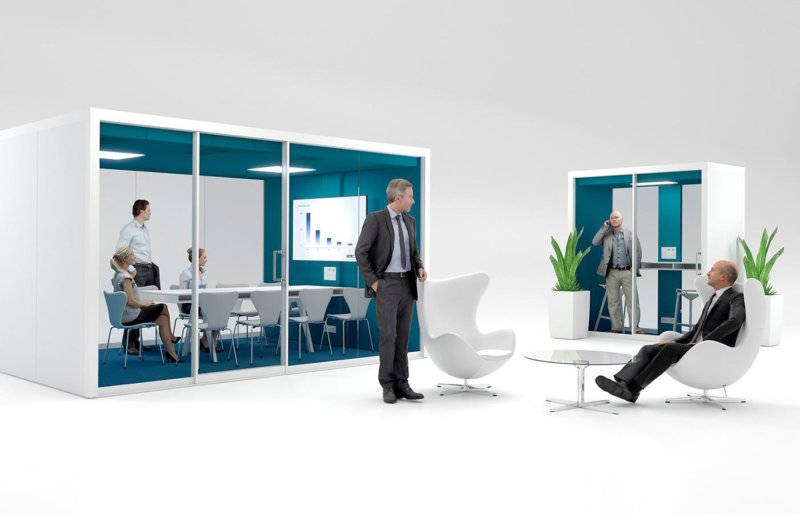
The hierarchical forms of communication of the past have become models of fluid exchange. Companies are looking to improve collaboration in their offices while allocating fewer private spaces. But these more social work environments do nothing to preserve privacy and focus. The key to finding the balance is to enable different spaces and understand how different elements can affect the noise level. In a previous post, we offered you some guidelines to achieve adequate acoustic comfort for correct environmental ergonomics.
Temperature
Between 23-26 ºC in summer and 20-24 ºC in winter, with humidity between 40% (in winter) and 65% (in summer). According to the aforementioned environmental ergonomics guide.
This guide reminds us that working with an inappropriate temperature can cause colds or discomfort. A very low level of humidity encourages the dryness of the mucous membranes and the skin, while a significant excess of it can cause the growth of fungi or some chemical substances that are harmful to humans.
Lightning
Whenever possible, natural lighting is preferable to artificial lighting. However, if natural light is not enough, artificial lighting should be used, preferably overhead (general) and supplemented with artificial spot lighting as a complement (table lamps or equivalent) if it is not enough.
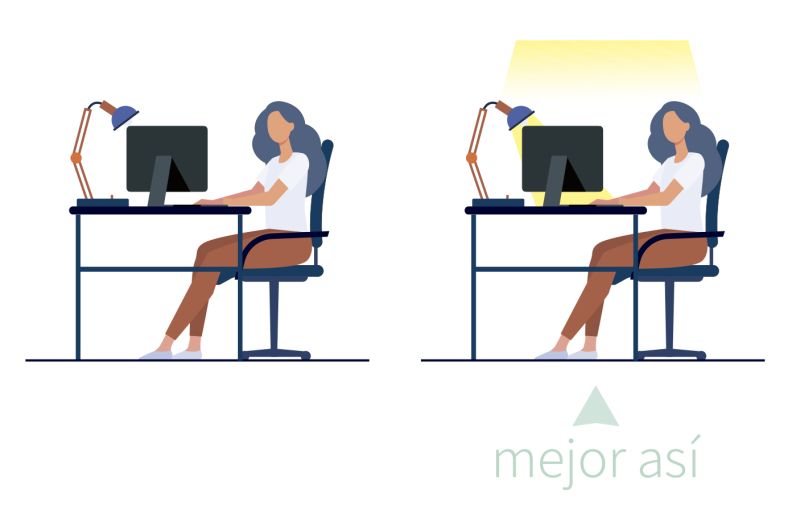
Image: Ergonomics Guide for Teleworking, by IBV and Aespla.
The lighting level in the task development area should be sufficient to read and write comfortably and not so high that it causes glare (direct or reflected), loss of contrast on the screen, or excessive contrast with the rest of the room. work environment. The distribution of light points must be balanced.
For tasks that work mainly with paper, the IBV, Aespla and FAMO guide recommends a lighting level in the work area of the order of 300 lux. For tasks where you work mainly with screens, around 500 lux is recommended.
Bearing in mind that it is usual for reading and writing tasks to be performed simultaneously, both on paper and on the screen, the average lighting level should be within the range of 300 lux to 500 lux.
To achieve adequate environmental ergonomics, it is also important to avoid sitting so that a window or point of artificial light is behind us, as it can produce annoying shadows and indirect glare. If, on the other hand, there is a source of light from the front, (or we are sitting in front of a window), direct glare can occur.
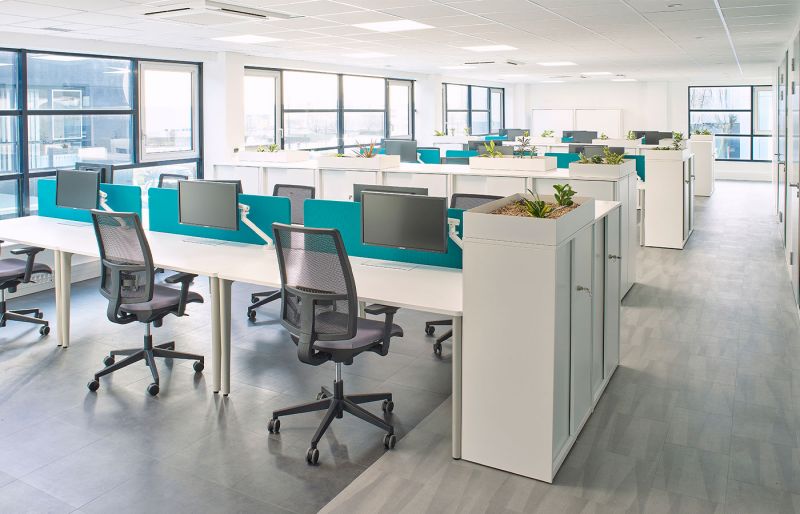
Ideally, place the computer screen perpendicular to the window, thus avoiding annoying glare and reflections. If this is not possible, use curtains, blinds or the like to regulate outside light. These elements are recommended mainly in the hours of greatest incidence of light.
Indoor environment quality
It is the set of existing environmental conditions in a closed area, installation and/or building. Within this set of conditions, the indoor air is analyzed, which must include those chemical, physical, and biological factors that are present in the workplace, and are likely to generate an effect on the health and well-being of workers.
In short, light, temperature and noise, among other factors, play a determining role in the mental, physical and social well-being that everyone needs for their health and performance. This is where environmental ergonomics comes into play.

